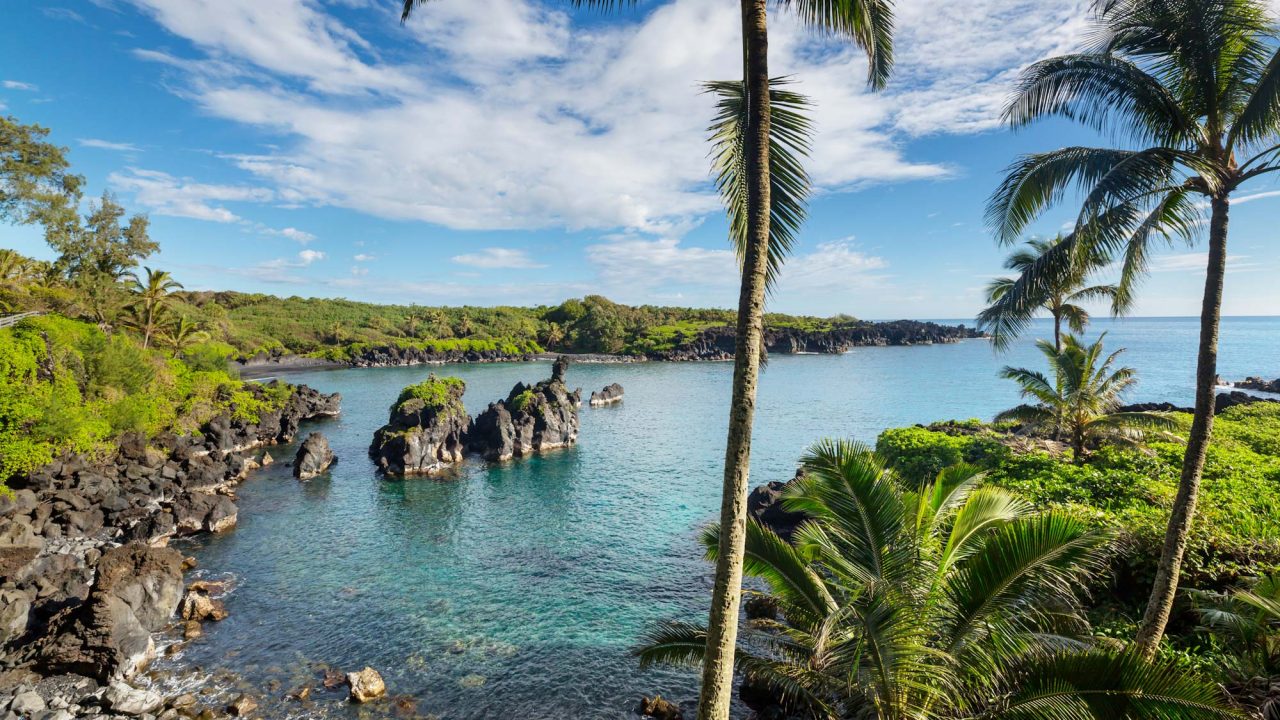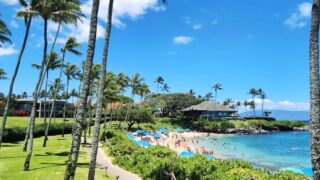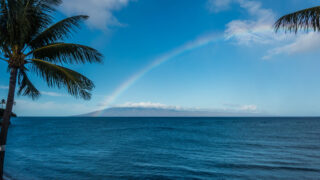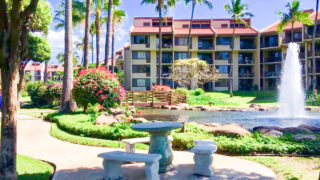There is no simple answer to how Maui is doing after the fires and what travel to the island looks like now and in the near future. Maui residents are also divided from being welcoming to protesting more visitors until the housing situation for fire victims is resolved.
At a meeting today we attended with Governor Josh Green, he said that there are nearly 15,000 short-term rentals on Maui. At the same time, 3,000 long-term rentals are needed immediately to house those displaced.
Maui tourism plan reflects severe challenges ahead.
Some of the key points Green raised began with the fact that Hawaii turns on tourism dollars. He hopes that statewide tourism income will be slightly higher this year than last, despite the tourism losses on Maui.
“We have to convert short significant numbers of short term rentals to long term rentals” — Governor Josh Green.
Governor Green said, “On Maui, you get 352% (more) by being a short-term rental owner… It’s just that Hawaii’s simply too attractive to the world. So we have to adjust this. The hope would be to give a runway statewide, a runway over time, so people (owners) can make the calculation of whether they can move to long-term rentals.
The governor said that alternatively, “we will have a two-tiered society. We will continue to have too little housing for working families, firefighters, and nurses and all the people that we know. And we’ll gradually drift to a society that doesn’t have services and can’t keep local people here. I’m learning things in this job.”


Governor Green introduced the possibility of a Maui vacation rental moratorium:
“I have communicated with my Attorney General… I will contemplate a full moratorium on short-term rentals for a short period of time on Maui. And I would lift it immediately once we get to 3,000 units.
Josh Green, Hawaii Governor
This comes as a new draft HTA plan intends to help increase travel to Maui:
“Working with state and federal management officials, the Hawaii Tourism Authority (HTA) will coordinate the next 12 months of tourist activity and tourism-related economic redevelopment in the region and enhance messaging on the appropriateness of traveling to non-impacted areas in Maui.”
HTA says that a key challenge for the Maui visitor industry is an incorrect belief that the affected area is much larger than it really is. They said that visitors do not understand the geography of the state or of Maui. For example, West Maui’s 109 square miles make up 15% of the island. But that small percentage, according to HTA, has caused Maui and statewide tourism to suffer.
In surveys, however, potential visitors choose not to book travel to Maui due to the “high cost and change fees” and also “out of respect for Lahaina residents.”
After Maui fire, here’s what HTA says it has learned needs to be done:
1. Provide consistent, ongoing communications to all stakeholders and to potential visitors. Confused messaging still appears everywhere. Information available online leaves residents and visitors unsure where to turn and what to believe.
That has clearly been the case on Maui from the point that Lieutenant Governor Sylvia Luke essentially closed the entire island following the August wildfires, giving messages that have continued to reverberate. Governor Green, you’ll recall, was not in Hawaii when the Lahaina fire occurred.
2. Clearly define what’s open on Maui to avoid visitors believing that the impacted area is much larger than it really is. The sooner that this is done, the faster the recovery may be.
Ongoing Challenges resulting from the Maui wildfires:
- The persistent shortage of housing remains a significant concern for Lahaina residents, with many still residing in accommodations intended for visitors and other housing scattered across island-wide.
- Some West Maui hotel industry employees living across Maui face challenges returning to work.
- The forecast for visitors to Maui remains down through 2024.
- Airline seats to Maui are down.
- Hawaii’s visitor count has been trending lower for the past three months, and, as a result, tax funds to help Maui are being reduced.
- Maui small businesses face lower sales, challenging their ongoing viability.
- Visitors are still unsure about the scope of the affected area, believing it is larger than it is.
- Messaging is exacerbated by those not wanting Maui Tourism to resume at previous levels.
- Too high costs and fire concerns remain the two biggest obstacles to Maui travel returning to normalcy.
Here’s some of what HTA hopes to achieve through its new plan:
- Increase Maui travel intent to Maui in 2024 and 2025.
- Grow statewide tourism.
- Create more visits to the other islands to help offset the lack of Maui tourism.
- By early 2024, increase the visibility and call to action for travel to Hawaii “targeting lucrative markets.”
- Support Maui businesses to provide consistent messaging that Maui is open to visitors.
- Expand Maui’s tourism offerings and attractions.
- “Support providing longer-term housing for wildfire-affected households living in visitor accommodations by assisting with communication efforts to short-term rental owners.
Hawaii Tourism Authority is currently requesting feedback on its draft plan. “HTA’s efforts follow the latest rapid assessment from the state Department of Health, which shows financial recovery is the greatest priority of wildfire survivor households, according to 29% of those assessed. Among the top challenges facing wildfire survivor households is high unemployment and businesses cutting hours or closing.”
This all comes as Hawaii faces a downturn in tourism.
The approaching holiday season is anticipated to witness at least a modest reduction in Hawaii’s normal influx of visitors. In fact, some insiders are now suggesting that it might take up to five years for Hawaii to fully recover to pre-Maui fire levels.
Hawaii’s tourism decline persists, with the Maui fire worsening pre-existing challenges. Escalating costs, post-Covid, have finally begun affecting Hawaii tourism, marking just the beginning of many issues.
Get Breaking Hawaii Travel News







If they go through with this it will change how we spend dollars in Maui. We stay in a timeshare so we do not use private home rentals. We always buy at small local stores wherever possible and eat in small family restaurants. We will shop only at big box stores and eat only at chain restaurants. Why because the locals are creating this issue and we have friends who own and rent in Kehei and a neighbour went into a government rental program and they had locals refuse to stay in Kehei because they want Kanapali area units. I had several locals be extremely rude in small local stores on my last visit and they obviously do not want our dollars. Well the chains will get our dollars.
We are at west Maui now. Have been here for 2 weeks. Other than the tragedy and Front Street no longer an attraction, all is the same. We have been welcomed and treated with Aloha. It’s heartbreaking to hear the stories and we have helped by donating. Maui has always been expensive and that hasn’t improved. We have been coming here for 30+ years and will continue to until we can no longer manage the journey.
Governor Green’s comments are hurting all once again. Visit the short term rental message boards and rental sites on the web. Since these comments, people are increasingly afraid of booking Maui, worried that their rental will be taken away from them by the government. This is unfortunate, once again. These plans must be thought out and carefully considered before airing. Its just too easy to switch to another island, Cabo, Costa Rica, or a cruise. This is a sensitive situation. Stop giving tourists more reasons to stay away. Best to all my Ohana.
We have owned a STR unit on Maui since 1984. We spend 5 to 6 months a year on Maui, spread over approximately 3 trips. We rent out our unit when we are not there. It is impossible to do long term rentals when you use your unit regularly. We know many people who do the same. How does this fit in? A problem with the mixed messages that are being seen by potential tourists is that the overall tone is we need your money but we don’t want you. Doesn’t encourage travel.
The HTA can make plans, set goals to increase tourism on Maui however there is 2 major conflicts that I think need to be addressed by HTA before they waste their money.
There is definately a rift between those living on Maui that want 2 opposite solutions.
1 camp wants tourism to increase to help small businesses, employees whose jobs depend on the hotel/condo tourism, resturants, etc.
The 2nd camp is the Hawaiians living on Maui who do not want tourism to come back- period. One does’nt have to go far on social media to read/hear the comments- Tourist are not wanted.
I feel that unless the 2 sides come together tourism on Maui remains flat.
.